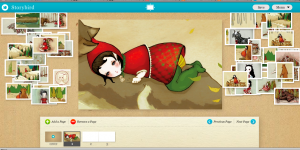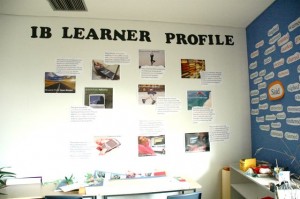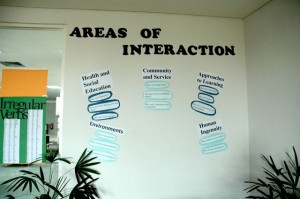After writing a few reflections on the units I covered last term, I realized that summative reflection could become a tedious chore that doesn’t serve much of purpose. This term I would like to work on writing shorter more formative reflections to help me stay connected with my units, and that will hopefully illicit some useful feedback from you, dear reader.
This term I am working on a unit of poetry with my grade seven Language B class. Two other teachers are working on a similar unit and we are co-planning the big ideas and objectives, but choosing to “get there” on our own. I will share unit overviews, assessments, and objectives in the next post. I wanted this initial post to be a bit more organic and free-flowing.
Poetry is important to me. Not as a unit that must be covered in English, but as a lifestyle. I see poetry as a vital tool in helping people live better, happier, more expressive, artistic lives. I see poetry not as a tool, but as a way of seeing, as a manner of being. Either you see the world figuratively, metaphorically, artistically, poetically, or you see it as it is.
I told my students that all children begin leading lives of poetry, but somewhere along the way we beat that imagination out of them and tell them that the sunshine doesn’t smell like lemon drops; it doesn’t smell like anything. How could it? My job, as I see it, is to remind them that reality is only what we say it is, when we live poetically.
I know that in the next few weeks, I will spend a lot of time giving inspirational speeches about the wonders of poetry and the artistic view of life. After our initial chat, I share a few clips from Dead Poet Society, and remind them what it means to Yawp! They are in 7th grade and don’t speak much English, but everyone can appreciate the power of a barbaric Yawp!
The next day we took our laptops outside. I am lucky enough to work on one of the most beautiful campuses I have ever seen. I created a shared Google Doc with the kids and told them to find a quiet place to sit alone and observe their world. I told them to write down words or phrases based on their sense. I didn’t ask for a poem, just basic observations.
I wanted them to take a close look at the world around them. I joked that so many times we just walk past everything and never really experience the world unless it is on a screen, and so I wanted them to enter the moment. This is a good time to stop and reflect on the use of technology in general. So many times we spend all our time and energy thinking about the tech that we lose site of what it is we are learning. I could have easily asked them to scribble their thoughts on paper, but I wanted them to see what others were writing. I wanted the Google Doc to be the space we all met to share what we saw. I knew that it would encourage those who were stymied.We will use this document later to create a shared poem.
I watched them scatter across what we call Peace Park, and then the Google Document came to life! I wish I would have taken a screen video, as it was cool to watch, but I was ill prepared so I watched as it slowly began to write itself instead. I would add suggestions from my perch on a hill. I usually just asked for more details or added the words, “like a…” to instigate similes.
Then I walked around, took photos, talked to kids, and made sure they were on task by asking questions:
- What does that soil smell like?
- What would these statues say if they could talk?
- What can that digger also be…a monster! Good, what is it doing? Eat bones! Great
I was surprised to see that nearly everyone was on task. They could have been on Facebook or messing around with games, but they weren’t. I couldn’t be bothered to be the cop; if they were off task than they would suffer later.
Next day, after I had edited my photos I showed them to the class. They couldn’t believe the way I had captured the very same things they had been looking at. I explained that poetry is the ability to look closely and share reality using language. I told them that before they worry about words, they have to learn to look at life poetically and that starts with being open to anything and getting your hands dirty. We spoke about the gardeners on campus and class and poverty and struggle. We talked about nature and beauty and fear. We looked at photos and we talked.
Today, I shared another talk with them. It has been paraphrased, and I wish I had recorded it, as they appeared engaged and mesmerized. As I made eye contact across the room, they seemed to be understanding:
When we are children we are free and open and courageous. We let our minds and hearts dance out in the open unafraid of judgment or evaluation. (The language I used in class was much simpler, forgive me as I flex my chops a bit here.) We draw purple trees and imagine that all objects are personified and bathed in metaphor. There are no wrong answers, no lines, no rules. That is until the first person laughs at us, or the first teacher says, “Now draw within the lines,” or our parents say that is great, but there are no monsters or unicorns. At this stage usually around the age of five we begin to build a wall around ourselves. Every year, every experience that goes sour forces us to add another brick. Until by the time we are thirteen, your age, we can barely see what the world looks like. We sit alone in our newly built cells afraid to look outside. Unaware that other imprisoned children are also sitting alone in their walled cells wondering where the magic went.
Most of us never stop building these walls. Look at the adults in your life. I bet you are amazed by the size of their walls. They rarely smile, dance or create anything beautiful. They worry and argue and stress and yell. It is frustrating to live alone behind walls.
I tell you this because as a child I had many terrible things happen to me. Now is not the time to share those details, but I got really good and making my wall. I built it fast and tall and strong. I hid there alone for a long time. Until one day I found a way out! This way out is what I want to teach you. Deconstructing the wall is our unit of inquiry this term.
So there you have it. You are caught up to where we are now. Today I had them find a quiet place in the room and write a blog post based on the following questions:
We are starting to study poetry in my English class and I…….
- What do you think about poetry so far?
- What did you think about being outside the other day?
- What did you think about the photographs?
- What did you think about what I was saying yesterday about “walls?” What did you understand? What questions do you have?
- Do you agree that people are scared to open up? How can we change that?
- What do you hope to learn about poetry?
- What do you hope to learn about yourself?
They wrote without incident or distraction for an hour straight. I will share what they wrote after I have read their posts. I’ll also talk more about summative assessment and more.
So tell me: How do you get middle school students excited about poetry? What tricks do you have?

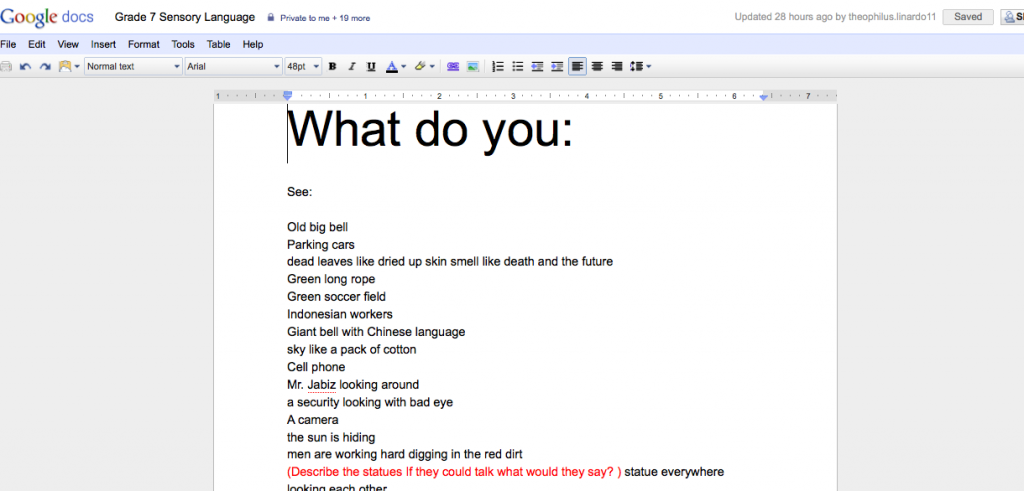
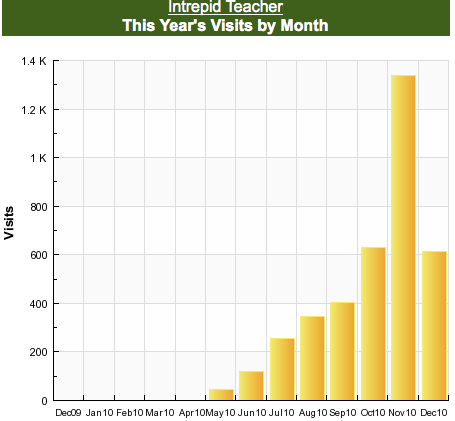
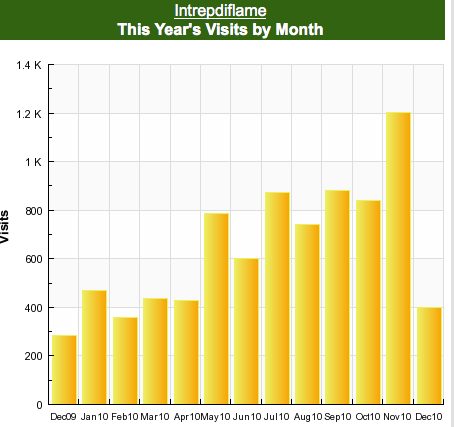
 image by
image by  image by
image by 